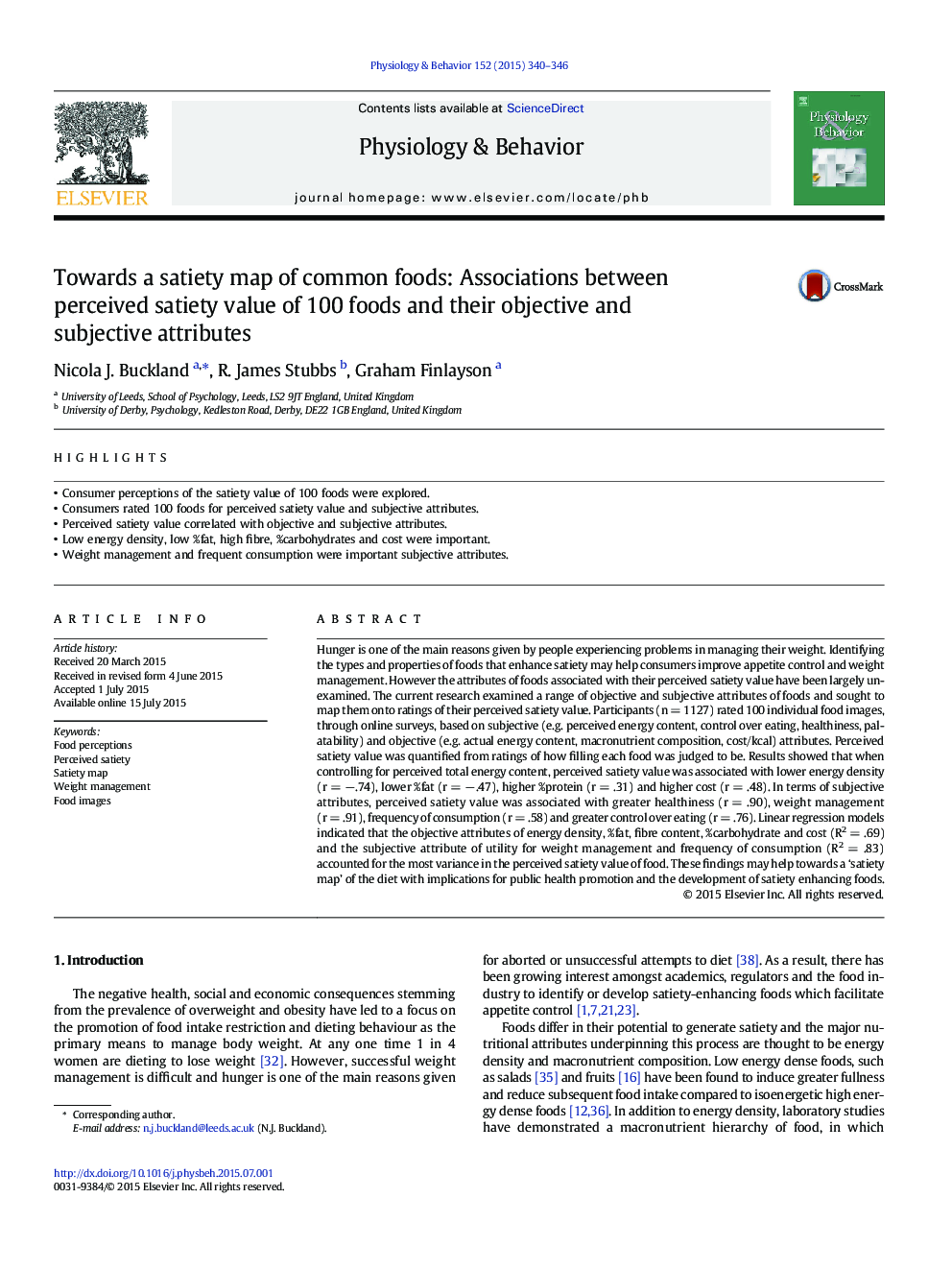| کد مقاله | کد نشریه | سال انتشار | مقاله انگلیسی | نسخه تمام متن |
|---|---|---|---|---|
| 5923174 | 1166294 | 2015 | 7 صفحه PDF | دانلود رایگان |
- Consumer perceptions of the satiety value of 100 foods were explored.
- Consumers rated 100 foods for perceived satiety value and subjective attributes.
- Perceived satiety value correlated with objective and subjective attributes.
- Low energy density, low %fat, high fibre, %carbohydrates and cost were important.
- Weight management and frequent consumption were important subjective attributes.
Hunger is one of the main reasons given by people experiencing problems in managing their weight. Identifying the types and properties of foods that enhance satiety may help consumers improve appetite control and weight management. However the attributes of foods associated with their perceived satiety value have been largely unexamined. The current research examined a range of objective and subjective attributes of foods and sought to map them onto ratings of their perceived satiety value. Participants (n = 1127) rated 100 individual food images, through online surveys, based on subjective (e.g. perceived energy content, control over eating, healthiness, palatability) and objective (e.g. actual energy content, macronutrient composition, cost/kcal) attributes. Perceived satiety value was quantified from ratings of how filling each food was judged to be. Results showed that when controlling for perceived total energy content, perceived satiety value was associated with lower energy density (r = â.74), lower %fat (r = â.47), higher %protein (r = .31) and higher cost (r = .48). In terms of subjective attributes, perceived satiety value was associated with greater healthiness (r = .90), weight management (r = .91), frequency of consumption (r = .58) and greater control over eating (r = .76). Linear regression models indicated that the objective attributes of energy density, %fat, fibre content, %carbohydrate and cost (R2 = .69) and the subjective attribute of utility for weight management and frequency of consumption (R2 = .83) accounted for the most variance in the perceived satiety value of food. These findings may help towards a 'satiety map' of the diet with implications for public health promotion and the development of satiety enhancing foods.
Journal: Physiology & Behavior - Volume 152, Part B, 1 December 2015, Pages 340-346
